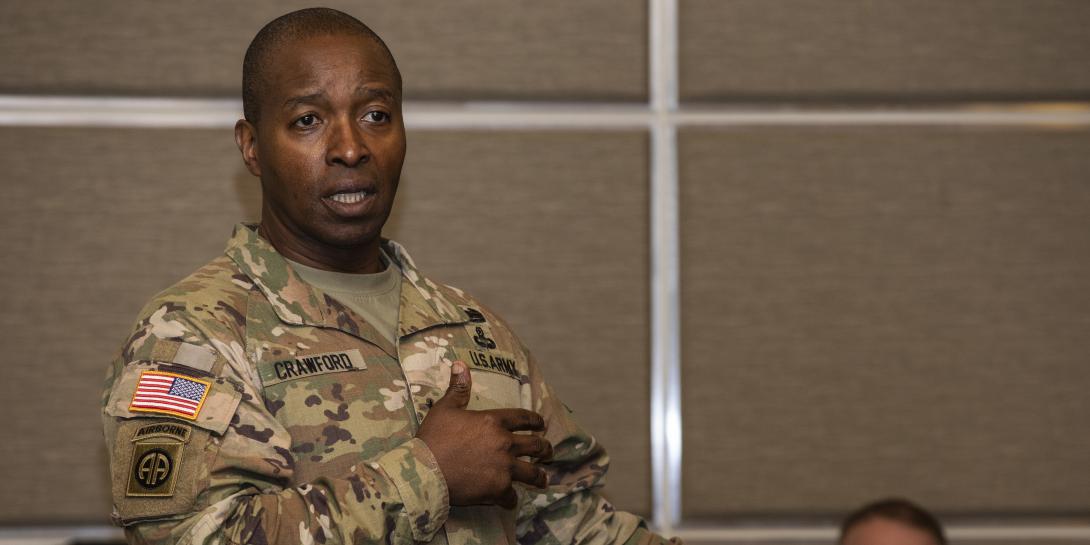Army CIO/G-6 Offers Peek at Service’s Near Future
The U.S. Army’s near future will include an increased focus on adopting “zero trust” cybersecurity practices, better protecting its network endpoints and consolidating its plethora of cloud computing contracts, according to Lt. Gen. Bruce Crawford, the Army’s outgoing CIO/G-6. It also will likely include tightening defense budgets.
The general indicated during a keynote address for the Army’s virtual 2020 Signal Conference, which is hosted by AFCEA, that the 2021 fiscal year “is going to be all about driving on priorities.”
LTG Bruce Crawford, @ArmyCIOG6, on unprecedented budgets in recent years: Whatever goes up must come down, or at least level off.#AFCEA
— George Seffers (@gseffers) July 14, 2020
One of those priorities will be educating network users on cybersecurity. The entire military had to rapidly expand its protection from the network perimeter to the users’ living rooms due to a sudden demand for secure teleworking resulting from the COVID-19 pandemic. As a result, the Defense Department CIO published a cybersecurity guide of “Cyber Dos and Don’ts, and the Army will now turn greater attention to “zero trust” and “end point” security.
Zero trust generally means that all users and devices must be authenticated before connecting to a network while end points can be described as remote devices that communicate back and forth with a network. The Army has more than 1 million end points. Gen. Crawford said the two are “big thrusts” for fiscal years 2020 and 2021.
LTG Bruce Crawford, @ArmyCIOG6: Data is the ammunition of the future.#AFCEA
— George Seffers (@gseffers) July 14, 2020
He also cited cloud computing, which will enable “sensor to shooter” capabilities, as well as big data efforts. The service has “unprecedented visibility” into its cloud computing efforts and has discovered 160 separate contracts. “The effort to start to consolidate some of those contracts is another major effort that I believe our industry partners will be focused on.”
The service also will expand its user base for cloud computing. “We have been able to get about $733 million to resource the Army’s data migration and all of the transitions and our ability to rid ourselves of non-authoritative data sources, and then the actual build out of our cloud hosting environment,” Gen. Crawford noted.
“The budget that we’re working on now, fiscal year 2022, that’s when we intend to scale our cloud efforts, not only to the mission threads like sensor to shooter that we have ongoing but to scale that to the rest of the Title 10 Army,” he said, referring to reserve forces.
LTG Bruce Crawford, @ArmyCIOG6, says the Army intends to focus more on #cyber skills than #cyber certifications. Wants to train 1,000 civilians as part of the cyber workforce by 2023.#AFCEA
— George Seffers (@gseffers) July 14, 2020
Gen. Crawford also indicated that the time is right for the service to separate the offices of the CIO and the G-6, which will happen following his looming retirement. “We’ve been organized this way since 2002. I would just ask all to think about the technological change, the technological disruptions that have occurred since 2002. Literally the invention of the concept of the iPhone [and] 5G. Cloud has really taken off and this focus on data. So, the time was actually right to create a separate CIO and to create a separate G-6. That allows the CIO to focus on the policy, governance and oversight—one of those things will be the budget at $12.9 billion—and allow the G-6 to focus on the enterprise network.”
LTG Bruce Crawford, @ArmyCIOG6, says time is right to separate CIO and G6 offices, in part because of tech advances since 2002 when the office was created.#AFCEA
— George Seffers (@gseffers) July 14, 2020
Speaking of the budget, the CIO/G-6 noted that future budgets will be tighter. “Whatever goes up must come down, or at a minimum, it must level off. We’ve had unprecedented budgets over the last three to four years, but there’s an inevitability of either declining resources or some forced hard decisions when it comes to budgets."
The Army also intends to train or “re-skill” nearly 1,000 civilian personnel currently working in information technology or cyber in order to meet future needs under a program know as Quantum Leap. The first 100 personnel will begin in the next couple of months, and the rest will complete training by 2023. Training will include a range virtual and traditional approaches.
If you enjoyed this article, you may also enjoy Gen. Crawford’s prediction for how the COVID-19 pandemic will affect the service’s future.





Comments